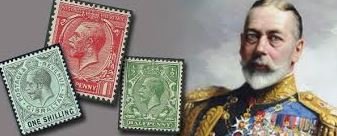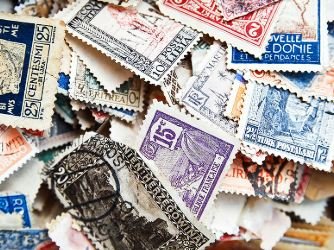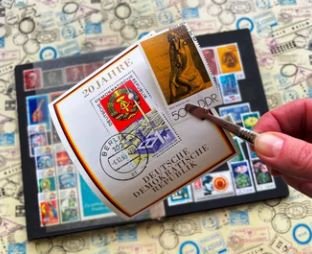Stamp collecting is a hobby that has captured the hearts of millions worldwide, offering a fascinating blend of history, art, and culture. One niche within philately that has grown in popularity is collecting stamp booklets. These booklets, often overlooked by novice collectors, offer unique opportunities to build a distinctive and valuable collection. In this guide, we’ll explore the world of collecting stamp booklets, proveiding tips, insights, and strategies to help you create a collection that stands out in both uniqueness and value.

What Are Stamp Booklets?
Before diving into collecting stamp booklets, it’s important to understand what they are. A stamp booklet is a small booklet containing a series of stamps, usually perforated for easy separation. These booklets were originally designed for convenience, allowing people to purchase multiple stamps at once. Over time, stamp booklets evolved into collectible items, featuring special designs, commemorative issues, or even limited-edition releases.
Stamp booklets typically feature a cover with the booklet’s title, a pane of stamps inside, and sometimes even special printing features such as coil rolls or specific perforations. While they may appear similar to regular stamp sheets, the value and uniqueness of collecting stamp booklets come from the booklet format itself, which can include exclusive issues, variations, and printing errors that are not available in individual stamp formats.
Why Collect Stamp Booklets?
One of the primary reasons collectors are drawn to collecting stamp booklets is the opportunity to own stamps that may be rarer or more unique than regular stamps. Stamp booklets often include special designs, limited runs, or unique features like booklet panes or perforation differences, all of which can add significant value to a collection.
- Variety and Uniqueness: Collecting stamp booklets allows collectors to explore variations in design, printing methods, and formats. Some stamp booklets contain stamps with errors, such as printing mistakes, which can be highly sought after in the philatelic community.
- Convenience and Historical Significance: Stamp booklets often commemorate specific events, anniversaries, or holidays, making them a unique way to collect a piece of history. These booklets provide insight into the cultural and historical context of the time they were released.
- Potential for Investment: While not every booklet is a rare or valuable find, certain limited-edition stamp booklets can appreciate over time. The rarity of a booklet, especially one with printing errors or a limited print run, can significantly increase its market value.
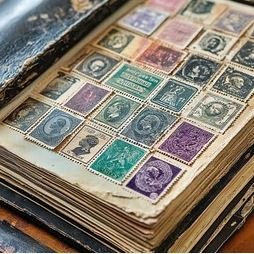
How to Start Collecting Stamp Booklets
If you’re new to collecting stamp booklets, it’s essential to start with a strategy. Building a collection of stamp booklets requires patience, research, and a careful eye for detail. Here are some steps to help you get started:
1. Learn the Basics of Stamp Booklet Types
There are several types of stamp booklets, and understanding the differences can help you focus your collecting efforts. Some of the most common types include:
- Standard Booklets: These are the typical booklets issued by postal authorities and usually contain stamps of regular denominations.
- Commemorative Booklets: These booklets feature stamps issued to mark special occasions, events, or anniversaries.
- Miniature Sheets and Special Editions: These are often limited releases that come in a booklet format, sometimes with unique artwork or special designs.
- Error Booklets: These are rare booklets that feature printing mistakes, such as inverted images or misperforations.
By understanding the different types of stamp booklets, you can start to build a collection around a specific theme, region, or type of booklet that interests you most.
2. Focus on Condition
As with any type of stamp collection, the condition of your stamp booklets is crucial in determining their value. When buying stamp booklets, ensure that they are well-preserved, as damage or wear can significantly reduce their market value. Look for booklets that are in near-mint or mint condition, with intact covers and undamaged stamps.
- Gum Condition: For unused booklets, check the condition of the gum (the adhesive on the back of the stamps). Stamps with original, undisturbed gum are more valuable.
- Perforation Quality: Ensure that the perforations are clean and intact. Torn or frayed perforations can lower the value of the booklet.
- Cover Condition: The booklet’s cover is an important element of its overall condition. A well-preserved cover adds to the appeal and value of the booklet.
3. Research and Catalog Your Collection
When collecting stamp booklets, it’s essential to document and catalog your collection. Researching each booklet, including the year of issue, design features, and any unique attributes, helps you keep track of your acquisitions and provides valuable context for your collection. Use online resources, stamp catalogs, and auction sites to learn more about the stamps and booklet variations.
Some popular stamp catalogs, like the Scott Catalogue, feature listings of stamp booklets, helping you identify rarities and variations that might not be immediately obvious. Additionally, many philatelic websites and forums can provide insights into common errors, variations, and hidden gems that may be of interest to you as you build your collection.
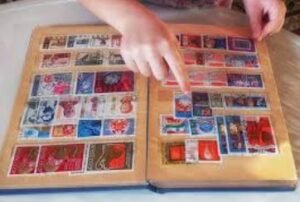
4. Network with Other Collectors
One of the best ways to expand your knowledge of collecting stamp booklets is to network with other stamp collectors. Joining stamp clubs, and online forums, and attending stamp shows allows you to meet other collectors and experts who can share their insights and experiences. They may have valuable advice on where to find rare booklets or offer tips on identifying overlooked variations.
By participating in the philatelic community, you also gain access to sales, trades, and auctions where you can find unique booklets to add to your collection.
The Value of Collecting Stamp Booklets
As with any collectible, the value of collecting stamp booklets depends on several factors:
- Rarity: Some booklets are produced in limited runs or for specific occasions, making them rare and valuable. For example, commemorative booklets or special edition releases tend to be more sought after than standard ones.
- Condition: As mentioned earlier, the condition of the booklet plays a significant role in determining its value. Unused booklets in mint condition are generally more valuable than those that have been used or show signs of wear.
- Errors and Variations: Collecting error booklets can be especially rewarding, as these often become valuable over time. Printing mistakes, such as miscuts or inverted images, can significantly increase the value of a stamp booklet, making it highly collectible.
- Demand: The market demand for certain booklets can fluctuate over time. Booklets that are in high demand due to their rarity or cultural significance are often the most valuable.
Where to Find Stamp Booklets
You can find stamp booklets from various sources, including:
- Stamp Dealers: Reputable stamp dealers often have a selection of stamp booklets for sale, ranging from common issues to rare and valuable editions.
- Online Marketplaces: Websites like eBay, Delcampe, and Etsy are popular platforms for buying and selling stamp booklets. You can often find a wide variety of booklets, but make sure to verify the seller’s reputation and the authenticity of the items.
- Stamp Auctions: Auctions, whether online or live, are excellent places to find rare and collectible stamp booklets. Auction houses specializing in philately can offer exclusive, high-value booklets that are difficult to find elsewhere.

Conclusion
Collecting stamp booklets offers a fascinating journey into the world of philately. Whether you are drawn to the historical significance, the artistic design, or the investment potential, stamp booklets provide a unique way to build a collection that is both personally fulfilling and potentially valuable. By learning about the different types of stamp booklets, understanding how to preserve and assess their value, and networking with other collectors, you can create a collection that reflects your passion for stamps and art.
Remember, collecting stamp booklets is a process that requires patience and dedication. As you build your collection, you’ll not only gain a deeper appreciation for the history and design behind stamps but also discover the joy of owning rare and unique items that hold significant cultural and artistic value.


